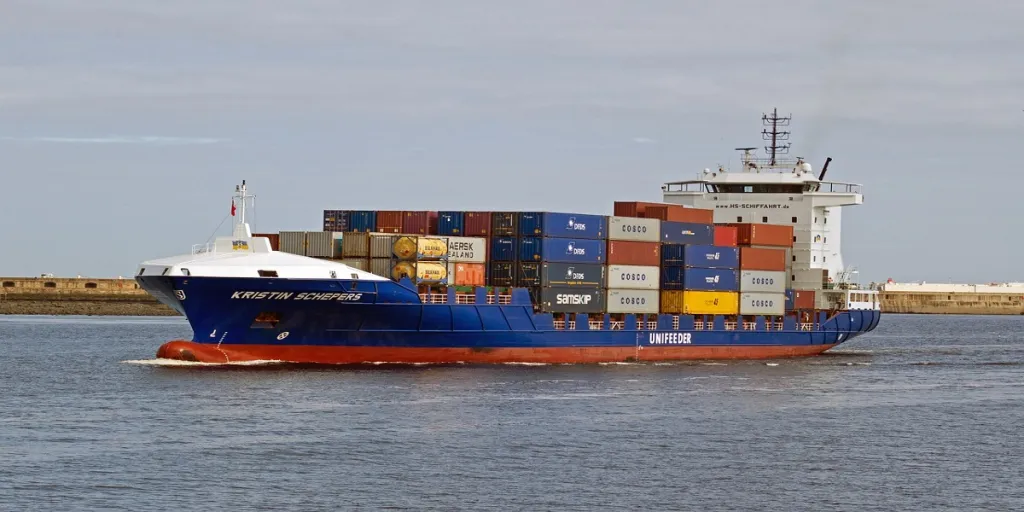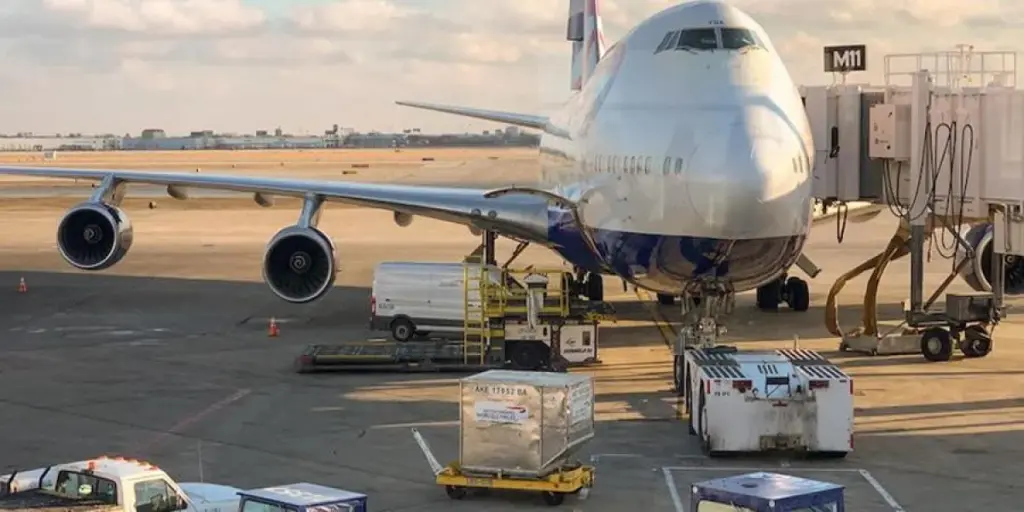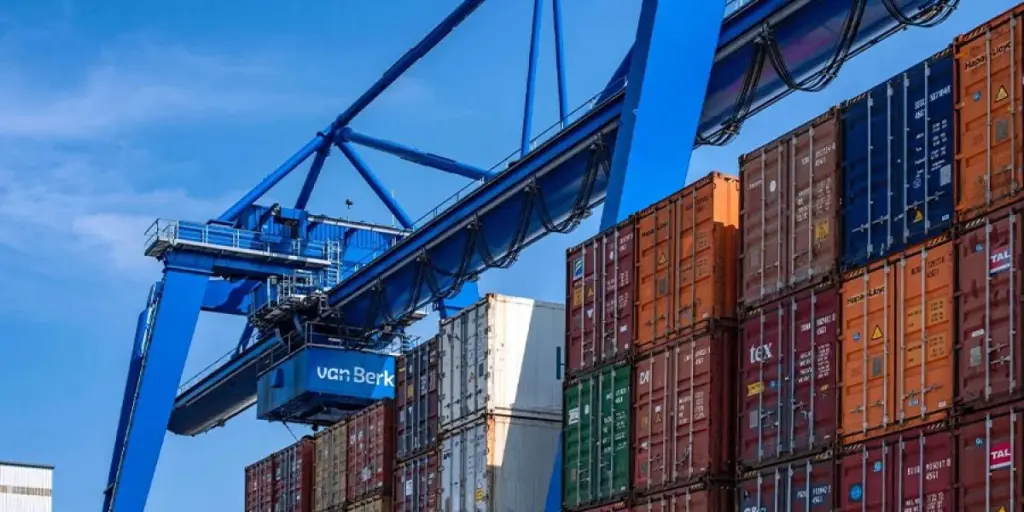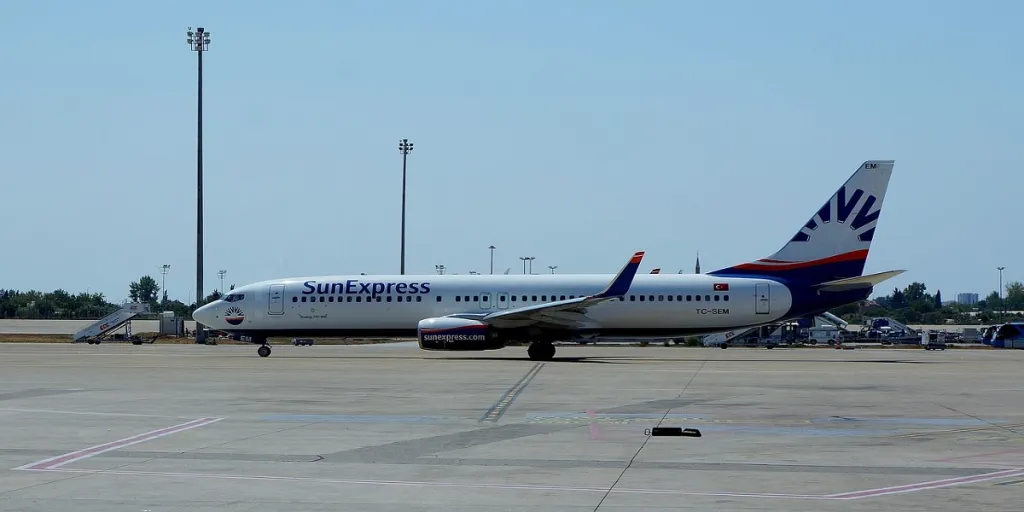To any culinary aficionado, finding a single pot that can be seamlessly used on a stove, then in an oven, and finally transferred to the refrigerator without changing its contents is often a challenge.
In freight transportation, a similar scenario unfolds—it’s often hard to find a shipping method that allows for a smooth and secure container transfer across different modes of transport without the need to repack its contents, except when leveraging intermodal transportation.
Read on to find out what intermodal transportation is, how it can help to solve the challenges in today’s freight transportation, and how to use it to unlock efficiency in freight management.
Table of Contents
What is intermodal transportation?
Challenges in today’s freight transportation
Key influences and strategies for intermodal efficiency
Navigating freight efficiencies
What is intermodal transportation?
In essence, intermodal transportation is all about employing uniform standardization across different transport modes to simplify logistics processes. However, in practice, it wasn’t always straightforward, especially before the 1950s when the concept of standardized containers hadn’t been patented by Malcom McLean, the American businessman widely recognized as the father of modern intermodal shipping containers.
Without such standardization, intermodal transportation would have merely been a method to move goods involving the use of two or more different modes of transportation, such as switching between truck, rail, ship, and air within a single journey, and inevitably handling, unpacking, and repacking the goods along the way.
The introduction of standardized intermodal shipping containers changed this dynamic, ensuring goods could be packed and transferred through these standard steel containers. This enables easy transfers from one vehicle to another without the need for handling or repacking, thereby positioning intermodal transportation as a modern logistics solution.
Challenges in today’s freight transportation
Traditional single-mode transportation, such as trucking or shipping, faces several limitations and challenges that can be resolved with the proper use of intermodal transportation. Let’s check through how Intermodal freight transportation can help to address these challenges.
Distance limitations
For long-distance shipments utilizing unimodal transport such as trucking, the process can become expensive and complex as it can be exhausting for drivers to go through long distances, which translates to more drivers and vehicle requirements, and hence not only increases the operational risk but also the overall process complexity.
At the same time, while shipping is capable of covering much longer distances, the limitation comes into play when accessing inland destinations that are not near the ports, requiring additional land transportation and subsequent unpack and repack arrangements.
In contrast, intermodal transportation offers an adept solution to these distance-related challenges by utilizing different modes of transport that complement each other to optimize the performance of freight movement. The intermodal method harmonizes the strengths of various transport modes through meticulous planning and sophisticated coordination.
For instance, intermodal transportation strategically utilizes rail for the primary haulage over extensive distances, complemented by trucking for the final leg of delivery to ensure a seamless, door-to-door service.
Given rail’s superior cargo capacity per unit of fuel compared to trucks, such an approach not only proves to be more time and cost-effective across both prolonged and shorter distances but also significantly reduces the necessity for numerous vehicles and drivers.
Fuel costs
Both trucking and shipping, the most-used unimodal transportation in the freight industry, are significantly affected by fuel costs. Trucks, particularly Class 8 and delivery trucks, which are primarily used for freight purposes, consume a considerable amount of fuel.
This consumption makes operations costly during periods of high fuel prices. According to the U.S. Department of Energy‘s report on average annual fuel use by vehicle type, these trucks are among the top five vehicle types with the highest fuel usage per year.
Similarly, ships rely heavily on bunker fuel, the main energy source for most of the global shipping fleet. Fuel costs have long been a major portion of total transportation costs in both trucking and shipping, impacting the profitability and competitiveness of shippers and carriers. The heavy reliance on fuel usage for trucking and shipping creates budget unpredictability due to the volatile nature of global fuel prices, making their operating costs susceptible to fluctuations in oil prices.
To mitigate these issues, intermodal transportation incorporates rail, which is more fuel-efficient for long distances and utilizes alternative energy sources such as electricity, reducing dependence on fossil fuels and their price fluctuations.
While electric models of trucks and ships exist, their widespread adoption is still hindered by high costs, limited range, and a lack of infrastructure. Consequently, rail currently stands as the most feasible mode of transport capable of utilizing alternative energy sources.
Limited capacity

The limited capacity of unimodal transportation is another significant factor for both the trucking and shipping industries. For example, the federal regulation in the United States limits the maximum loaded gross vehicle weight of a commercial vehicle to 80,000 pounds on the Interstate System in the US. This includes the cargo and the vehicle itself.
Limited by their physical size and weight regulations, such restrictions curtail the amount of cargo the trucks can carry at one time. This can be particularly problematic during peak times, failing to meet the surging demand efficiently and instead, requiring additional trips, which in turn increases costs due to a potential shortage of drivers, vehicles, or space.
In the meantime, the capacity of ships, albeit significantly higher than that of trucks, comes with capacity limitations that arise from other factors. Port capacity, the size and availability of ships, and the logistics of loading and unloading which are more complex and time-consuming for maritime transport are the indirect capacity limitation issues of shipping.
On top of these issues, the specific infrastructure requirements (such as with a certain depth of harbors and size of cranes), further limit the size of the ships that can dock at certain ports, thereby exacerbating the limited capacity as well.
Intermodal transportation offers a solution to capacity issues by incorporating the high-capacity strengths of rail, ships, and potentially air freight. This integration allows for the movement of larger volumes of cargo that would otherwise be constrained by the maximum load limits of single transportation. Since intermodal transportation uses standardized containers, the loading and unloading efficiency and flexibility are increased, effectively alleviating capacity constraints found in unimodal transport alone.
Increased maintenance
Naturally, long-haul trucking and shipping subject both vehicles to wear and tear, thereby requiring more frequent maintenance and repairs to ensure safety and efficiency. Downtime for either mode means lost revenue and potential delays in the supply chain.
Intermodal transportation reduces reliance on any single vehicle, spreading the physical burden across different modes to minimize wear and tear. It mitigates maintenance costs by optimizing routes and reducing travel distances, as utilizing the most efficient mode for each journey leg can decrease vehicle wear and tear and extend maintenance cycles.
This approach enhances reliability and schedule consistency, reducing unexpected downtime and associated costs. In addition, intermodal transportation indirectly enhances vehicle longevity through fewer goods handling and repacking, thereby significantly reducing risks of damage and loss.
Traffic and delays
Traffic and delays pose regular challenges for unimodal transportation, such as trucking or shipping. Road traffic congestion increases travel time and fuel consumption for trucks. Susceptibility to traffic congestion can lead to driver fatigue, stress, and accidents, along with weather-related delays, unavoidably disrupting schedules and prolonging delivery times.
Similarly, shipping is not immune to delays either; it faces its own set of challenges such as port congestion, and customs delays, and can also be affected by weather conditions at sea. All these issues can lead to an increase in waiting time and additional demurrage costs for ships. Intermodal transportation offers a comprehensive solution for these issues.
It mitigates road congestion by utilizing railways, less prone to traffic delays, ensuring more reliable scheduling. For shipping challenges, intermodal transportation incorporates seamless transfers between ship and rail or road, reducing dependency on port availability and therefore minimizing chances for customs delays. Air freight options within intermodal solutions can also cater to urgent or time-sensitive shipments to cut down transit times.
Key influences and strategies for intermodal efficiency

Even though intermodal transportation offers a sophisticated solution to the contemporary challenges of freight logistics, it faces its own set of challenges and barriers. These include the coordination and integration of various modes, the availability and accessibility of intermodal terminals and facilities, the compatibility and interoperability of equipment and technology, and the compliance and alignment with policies and regulations.
To surmount these obstacles and enhance the efficiency and effectiveness of intermodal transportation, several key factors and strategies need consideration and implementation.
Key factors that affect intermodal efficiency

Firstly, infrastructural readiness is a crucial factor that represents a fundamental requirement. The presence of adequate and reliable facilities and networks among different transportation modes, including roads, rails, ports, airports, terminals, and facilities, lays the foundational groundwork for seamless transitions in intermodal transportation.
To cater to the current and future demands and expectations of intermodal transportation, infrastructural readiness does not only pertain to the development and expansion of new infrastructure but also emphasizes the maintenance and improvement of existing infrastructures. Through research, development, and the implementation of advanced technologies, infrastructure readiness is imperative for an efficient intermodal system.
However, regardless of how complete the basic infrastructure is, it’s important to realize that the choice of transportation mode still plays a pivotal role in deciding the compatibility and optimal combination of the selected modes for specific segments of each shipment route.
Some of the critical determinants that contribute to an efficient selection encompass considerations such as the origin and destination, the distance and duration, the cost and budget, the service and quality, as well as the environmental and social impact. The selection of such is also highly contingent on the characteristics and requisites of the goods, encompassing aspects such as size, weight, volume, value, perishability, and security.
Technology utilization that involves the adoption and innovation of new technologies, such as automation, digitalization, and smart systems, can then further enhance the efficiency and effectiveness of intermodal transportation, as well as the safety and security of the goods and the people involved.
Intermodal transportation relies on these technologies to facilitate the coordination and integration of different modes, as well as for the advanced tracking and tracing of goods, scheduling, and management systems throughout the journey.
Apart from the above three factors, the performance and competitiveness of intermodal transportation can be significantly enhanced through the implementation of government policies and regulations, such as tariffs, taxes, subsidies, and the establishment of standards, rules, and laws. Simplifying and aligning these policies across different modes, regions, and countries minimize the complexities and inconsistencies that currently hamper intermodal transportation.
This harmonization is crucial because it creates a unified framework that allows for smoother transitions between transportation modes, reduces administrative burdens, and facilitates more efficient cross-border movement of goods. Moreover, fostering collaboration between the public and private sectors is essential to support and accelerate the growth of intermodal transportation infrastructure and services.
A prime example of how legal frameworks can influence the operational feasibility and efficiency of intermodal transportation in the United States is The Intermodal Surface Transportation Efficiency Act of 1991. This Act underscores the U.S. commitment to creating a national intermodal transportation system, providing a robust foundation for global economic competitiveness and promoting the adoption of intermodal transportation strategies.
Strategies to improve intermodal transportation efficiency

- Optimization of routes and modes: Careful planning in intermodal transportation involves the integration of both transportation modes and route optimization for each distinct journey segment. The primary goals are to minimize the total cost and time, as well as to enhance the service and quality of the freight movement.
The optimization of routes and modes requires balancing and leveraging the advantages and disadvantages of different modes, such as speed, reliability, flexibility, and sustainability. This covers the selection of an ideal mode for each part of the journey, from the initial to the final legs, the main long-distance haul, and the points of transfer.
Adding to this, understanding the specific needs of each cargo type and customer expectations are paramount in this process. Ultimately, this strategy aims not only to diminish fuel consumption, emissions, and congestion in intermodal transportation but also to elevate customer satisfaction and loyalty.
- Efficient handling and compliance: This process involves minimizing the number and duration of intermodal transfers and streamlining and standardizing the procedures, operations, and documentation processes. It’s also about harmonizing and aligning policies and regulations across different modes, regions, and countries.
This approach not only aids in avoiding delays, errors, and penalties that could impact the overall performance and competitiveness of intermodal transportation but also enhances the safety and security of both goods and individuals involved. Optimizing capacity and adhering to weight limitations can further prevent additional charges and compliance issues.
Simplifying documentation processes is also essential for the efficient handling of intermodal shipments, ensuring adherence to regulations, and circumventing unnecessary costs, thereby maintaining a smooth flow in the logistics chain and bolstering the efficiency of intermodal transportation systems.

- Enhanced transit and terminal efficiency: This strategy focuses on increasing capacity and utilization while ensuring the maintenance and enhancement of infrastructure and equipment. It aims to more extensively integrate and amplify the use of advanced technologies and systems, improving the speed, accuracy, visibility, and traceability of freight movements. Essentially, it involves elevating the efficiency and speed of cargo handling at interchange points and optimizing the utilization of resources and assets.
Additionally, this strategy encompasses reducing operational costs and risks while enhancing the quality and reliability of intermodal transportation services. By refining these processes and adopting innovative solutions, intermodal transportation is poised to reach greater levels of efficiency, for a smoother, quicker, and more dependable movement of goods across different transportation modes.
- Strengthened security and collaboration: This strategy is essential for improving the protection, resilience, and coordination of freight movement within intermodal transportation. Essential security measures include conducting thorough risk assessments, adhering to security standards and audits, developing emergency plans and recovery strategies, and establishing robust networks for information sharing and communication.
Altogether, these efforts are instrumental in mitigating threats and vulnerabilities like theft, damage, loss, and disruption. By fostering partnerships among key stakeholders—including shippers, carriers, logistics providers, terminal operators, infrastructure developers, technology providers, and government agencies—secure and seamlessly coordinated transport solutions can be achieved. Promoting trust among these diverse parties is essential for the smooth operation and overall success of intermodal transportation systems.
Navigating freight efficiencies
Intermodal transportation represents a comprehensive approach to managing freight efficiency by integrating various modes of transport with standardized containers to address distance, fuel costs, capacity, and maintenance challenges. By leveraging the strengths of different transportation modes, it achieves long-haul efficiency, minimizes reliance on fuels, and extends the life cycle of vehicles, minimizing maintenance costs.
This methodology not only alleviates congestion by certain modes of transport and reduces maintenance demands but also enhances the flexibility and reliability of cargo shipments, offering a resilient answer to the constraints faced by unimodal transportation methods.
The effectiveness of intermodal transportation hinges on several critical aspects: infrastructure readiness, the strategic selection of transportation modes, the application of advanced technology, and adherence to governmental laws and regulations. Addressing these elements through route and mode optimization, boosting transit and terminal operations, ensuring robust security, and streamlining processing and compliance, intermodal transportation can significantly elevate freight efficiency.
For more ideas, industry insights, and business updates on harnessing the full potential of intermodal transportation, visit Chovm.com Reads regularly, to discover more expert advice and the latest business trends.

Looking for a logistics solution with competitive pricing, full visibility, and readily accessible customer support? Check out the Chovm.com Logistics Marketplace today.





 Afrikaans
Afrikaans አማርኛ
አማርኛ العربية
العربية বাংলা
বাংলা Nederlands
Nederlands English
English Français
Français Deutsch
Deutsch हिन्दी
हिन्दी Bahasa Indonesia
Bahasa Indonesia Italiano
Italiano 日本語
日本語 한국어
한국어 Bahasa Melayu
Bahasa Melayu മലയാളം
മലയാളം پښتو
پښتو فارسی
فارسی Polski
Polski Português
Português Русский
Русский Español
Español Kiswahili
Kiswahili ไทย
ไทย Türkçe
Türkçe اردو
اردو Tiếng Việt
Tiếng Việt isiXhosa
isiXhosa Zulu
Zulu